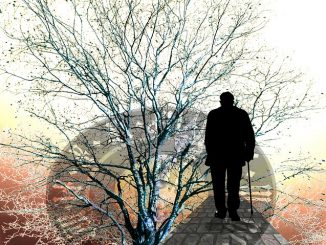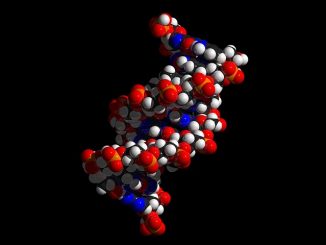
The two certainties in life are supposed to be death and taxes. My colleagues and I built a financial advisory business by helping people plan for both of them.
But what if one of these certainties became not so certain?
We’re still a long way from conquering death, but a case involving a British teenager reminds us that the rapid pace of technological and scientific change means that may not always be true. A 14-year-old girl, who remains anonymous for legal reasons, fought to have her remains frozen in the hope that she might be brought back to life at some future date.
The teenager’s parents disagreed about the procedure, leading to the first legal case of its kind in the U.K., and possibly the world. The girl’s mother supported her wishes, while her estranged father originally opposed them, though The Associated Press reported that he relented as his daughter’s death approached. The girl argued that cryopreservation would give her a chance to one day wake up in a time, even one hundreds of years in the future, when her cancer might be curable.
Peter Jackson, the High Court judge who heard the case, ruled that the girl’s mother should be allowed to determine what happened to her child’s remains. According to the BBC, the girl was taken to the United States and her body preserved, in accordance with her wishes, after her death in October.
Jackson said he was moved by the teenager’s situation, and noted that his country’s ministers should consider cryonic regulation for the future, as more cases like this one inevitably arise. “It is an example of the new questions that science poses to the law, perhaps most of all to family law,” Jackson wrote.
Skeptics have observed that no one knows whether reviving even a well-preserved human body is possible under any circumstances. In a case where the original cause of death is something systemic, such as terminal cancer, we have even less basis for thinking such a feat possible. On the other hand, as Jackson observed in his ruling, cryopreservation of tissue is now routine in many branches of medicine; cryonics is an extreme application of similar principles.
Less than 50 years ago, a human heart transplant was a purely theoretical procedure. Twenty years ago, scientists introduced the world to Dolly, the first mammal cloned from an adult somatic cell. In 2013 scientists at Massachusetts General Hospital successfully transplanted functional lab-grown kidneys into rats. I do not know whether cryonics is possible, but history suggests we would be wise not to discount the possibility of even seemingly outrageous advances.
I have been thinking a lot about what it would mean for society if someone could come back from the dead. I’m not the only one, either. While fiction about returning the dead to life goes at least as far back as “Frankenstein,” the idea of the dead coming back not as monsters or zombies, but as themselves, has also worked its way into speculative fiction. My wife and I watched “The Returned,” a 2015 TV series based on the earlier French series “Les Revenants.” Both programs pose the question: What happens when the dead return to their communities, evidently unharmed and whole?
For a financial planner – and for everyone else – a “returned” person could raise a lot of complex questions, many of them more legal and practical than metaphysical.
For instance, is a returned individual still a citizen of the country of his or her birth, or does death cancel citizenship? Could someone who lived abroad but was preserved in the United States – as is the case with the unnamed girl from the U.K. – acquire citizenship by virtue of the location of his or her scientific rebirth?
How about a trust, established to benefit one person during her lifetime, with the remainder meant to pass to heirs after her death? If the lifetime beneficiary returns before all the trust’s assets are distributed or spent, does she have a claim on them?
What happens when the spouse of a preserved deceased remarries? If the survivor and his new spouse remain alive upon the original spouse’s return, is the returned spouse married or single? There was never any divorce, though on the other hand, many traditional vows include “’til death do us part” as an end point. Is the original surviving spouse married to partner number one, partner number two or both? And if there are children involved, how many parents will a child have if a step-parent has completed an adoption and a previously deceased biological parent then returns? How will custody be determined?
Can someone write a will that reserves the power to reclaim property, should she return to life after probate ends? How will tax law deal with any of this?
Science fiction fans may be inclined to carry this thought experiment a step further. What happens if someday our preserved consciousnesses can be restored, not to our original bodies, but through some artificial means? What would happen if we inhabited purely synthetic bodies, or nothing that is recognizably like a human body at all? Would a virtual me have the right to control the property that physical me acquired, or to use the income from that property as I now saw fit in my virtual state?
Not long ago, I would have dismissed all of these questions as entertaining fantasy or, at best, idle speculation. But we really cannot dismiss these possibilities anymore. The frontiers of science are pushing beyond the boundaries of life itself.
Even the definition of life is beginning to blur. When a computer can out-reason a master at the games of Go or chess, would it be beyond the pale for someone to invent an artificial intelligence designed to function as a corporate CEO? Or for a board of directors to hire that CEO? Would that decision require an employment contract or a software license? Should the CEO be purchased or compensated?
The case of the British teenager who fought for her right to be preserved is a human tragedy. I do not mean to in any way make light of the pain her family suffered or the choice this young girl made to try to give herself at least a chance to one day reach adulthood. The fact that she felt she needed to make that choice, and that a court not only entertained her request but honored it, tells us that the day we need to seriously address these questions may be closer than we realize.
- Bulenox: Get 45% to 91% OFF ... Use Discount Code: UNO
- Risk Our Money Not Yours | Get 50% to 90% OFF ... Use Discount Code: MMBVBKSM
Disclaimer: This page contains affiliate links. If you choose to make a purchase after clicking a link, we may receive a commission at no additional cost to you. Thank you for your support!





Leave a Reply